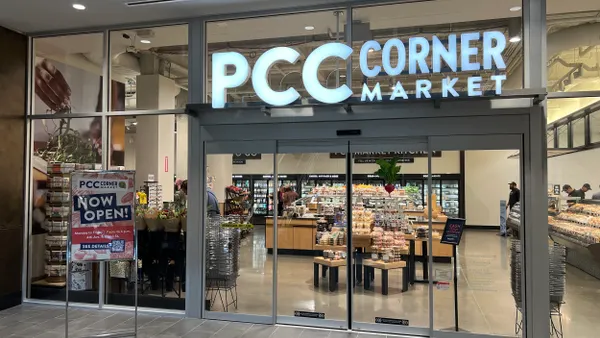Better catering to Generation Z and young millennial consumers has been a learning experience for grocers over the past few years, especially as the former generation’s spending power continues to rise.
Gen Z shoppers, currently ages 12 to 27, make up 21% of the U.S. population and possess $984 billion in spending power, according to Kantar Retail IQ. Meanwhile, millennial consumers, currently ages 28 to 43, make up 22% of the population and accounted for nearly $2 trillion in retail spending over 12 months, according to Capital One Shopping research.
On the whole, younger consumers are often perceived as health conscious, price sensitive and seeking out differentiated assortments.
But a recent report by Advantage Solutions breaking down various “Grocery Purchase Attitudes” shows that millennial and Gen Z consumers are not as aligned in their purchasing priorities as grocers may assume.
Aside from age, the report takes a close look at various characteristics like gender, race, income and marital status to provide a detailed and well-rounded makeup of the five Grocery Purchase Attitudes: Care About the Classics, Price Hunter, Health Concerned, Buyer of the Best and Trend Seeker.
The Advantage 2024 Shopper Outlook report published last month is based on more than 8,000 responses to an online survey conducted between Oct. 31 and Dec. 5, 2023.
The trendy shopper may not be who grocers think they are
Despite Gen Z often being associated with social media savviness, the term “Trend Seeker” shoppers, as Advantage Solutions calls them, refers primarily to young, married families interested in trying “new, trendy products,” according to the report.
Nearly 40% of Trend Seekers are between the ages of 25 and 40, making the majority of the group millennials, and nearly 40% have higher-than-average incomes ranging between $100,000 and $150,000. This group is also the most likely of the shopper cohorts Advantage Solutions identified to have children at home.
The Trend Seeker is the most ethnically diverse group, the report noted, with 71% White, 17% Hispanic and 14% Black.
“Selection is key to where they choose to shop,” Advantage Solutions said, noting that 55% of people in this group have purchased an impulse item after sampling.
Store variety seen with Trend Seeker shoppers
Who is budget-minded?
White Gen Z and young millennial shoppers comprise what Advantage Solutions calls the “Price Hunter” consumer. Women make up nearly two-thirds of this group, the report noted.
This group relies heavily on private label items: “These shoppers look for the best value and/or lowest price. They’re more likely to choose store brands than the average shopper,” the report stated. A key store choice motivator for the Price Hunter category is “everyday low price” offerings.
A smaller percentage of Price Hunters are married compared to Trend Seekers. Twenty percent live alone and some live with their parents or roommates. Price Hunters also have tighter budgets, with 30% making under $50,000.
Price Hunters’ preferred grocery stores
Health-conscious & produce focused
One of the groups Gen Z is least likely to be categorized as is “Health Concerned,” according to Advantage Solutions’ survey findings. Rather, these shoppers are primarily millennials and members of Gen X.
Just 8% of the Health Concerned group are between the ages of 18 and 24, while 31% are ages 25-40 and 33% are ages 41-60, according to the report. Another ethnically diverse group, with 14% Black, 15% Hispanic and 7% Asian, these shoppers are more likely to be employed and male than the average primary shopper.
“These shoppers want ‘the best’ products,” the report noted. As with Trend Seekers, samples often drive purchase decisions for this group. The Health Concerned consumer also takes quality produce, product exclusivity and the experience of trained sample specialists into high regard when choosing where to shop.












